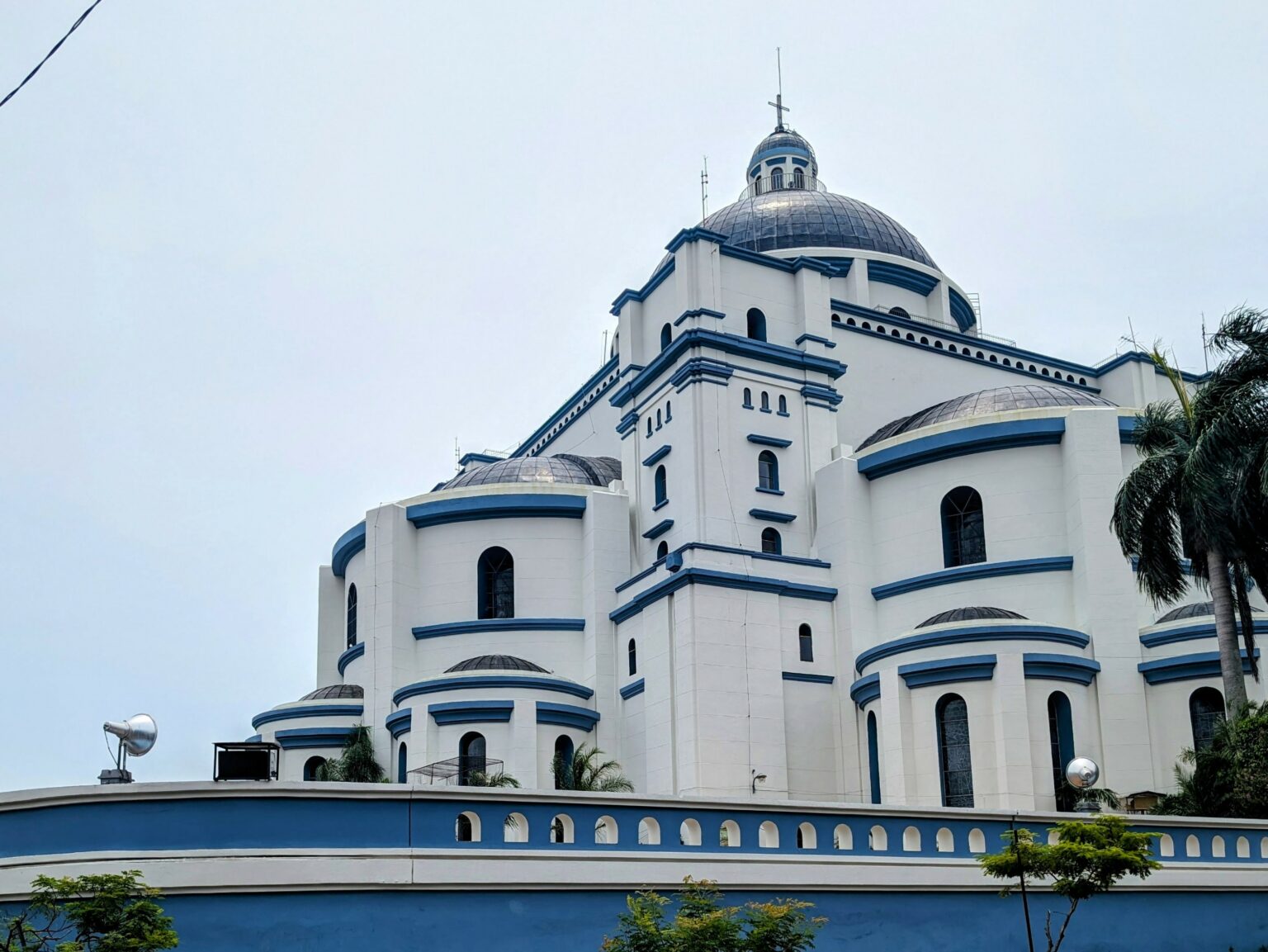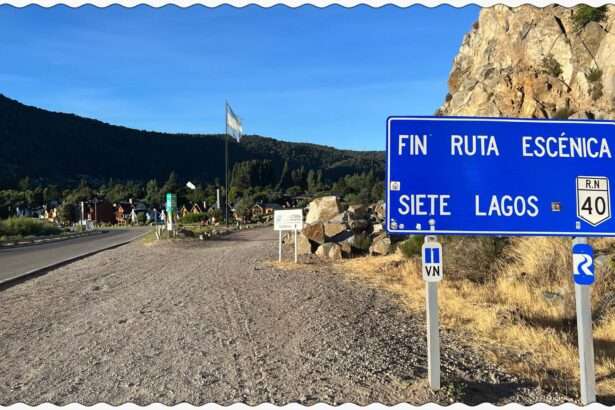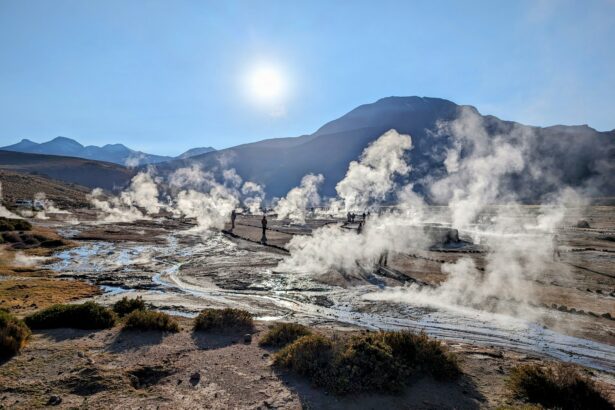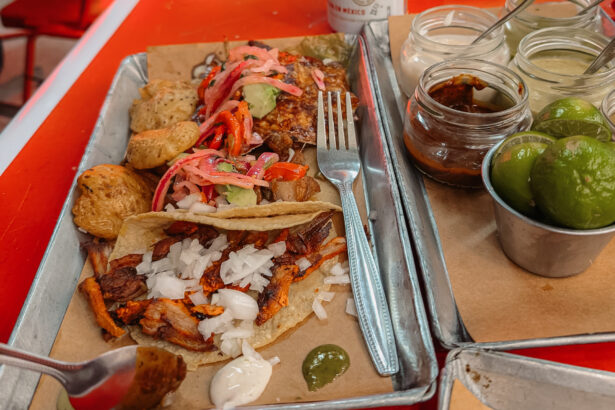The Circuito de Oro is a tour of the outskirts of Asuncion, Paraguay and is a great introduction to the history and culture of the country. Book this tour through this WhatsApp link for a private tour. You can tell them the date that you would like and the number of people who are going on the tour. You can communicate with them in English! The tour runs from 8 am to 3 pm. The following are aspects of the tour that will give you further insight into the country.
This article is a mix of different history and culture that you will learn during the Circuito de Oro. All of this is important to understanding Asuncion, Paraguay and the overarching country. While the country isn’t internationally known for its tourist attractions, it is a great place to visit to get a local and authentic experience in South America.
Paraguay has a history and culture that stems from the native populations in this area prior to colonization. Unlike other countries in South America, the colonists integrated with the native people of the area which is evident in the fact the original language is still spoken today.
A Little Historical Background About Paraguay
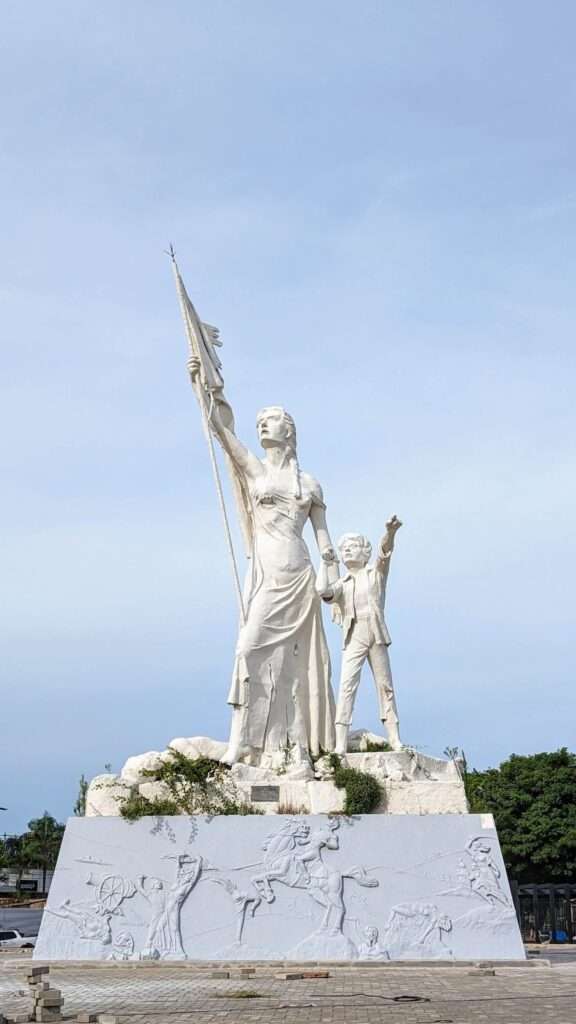
Legend says that the arrival of the Spanish actually helped unite the native populations, with one conquistador deciding to marry a daughter of each of the different native groups in the area to bring them all together, defying the monogamous rules of European culture.
The Guaraní, largest of the native groups, were a polygamist society. However, when the Jesuits and the Franciscans created missions in the region, they attempted to convert these populations. This meant that the Guarani would no longer be able to have many wives because Christianity demands monogamy. Many Guaraní decided to exchange their religion and cultural practices for Christianity because it came with the added benefit of protection by the Spanish colonists from other native rivals.
Later, after the Triple Alliance War (a war against Brazil, Argentina, and Uruguay), Paraguay lost almost 69% of their population, including 90% of the men in the country. As a result, there was a gender imbalance as the women were left to rebuild the country and serve as caretakers to the few men who remained. Paraguay encouraged immigration to the country to attempt to repopulate.
Today, Paraguay celebrates its history in the monuments it has developed. The immigration to the country and mix of different cultures is present in the variety of cuisines that can be found throughout Asuncion, Paraguay.
Tereré Versus Maté
In Paraguay, along with other countries in this region including Argentina and Uruguay, you will often find people drinking from a small gourd with a metal straw. There is a communal aspect to this drink and it is a strong part of the social culture and identity of these nations. Typically, people refer to it as maté.
Maté is a drink made from the yerba mate plant by filling a special cup with the loose leaves of the plant, adding hot water to fill the cup, and drinking from a special straw called a bombilla until all the water is gone. The straw has a filter at the bottom that stops the yerba leaves from coming through the straw. Then, you fill the cup up with water again and take your next drink.
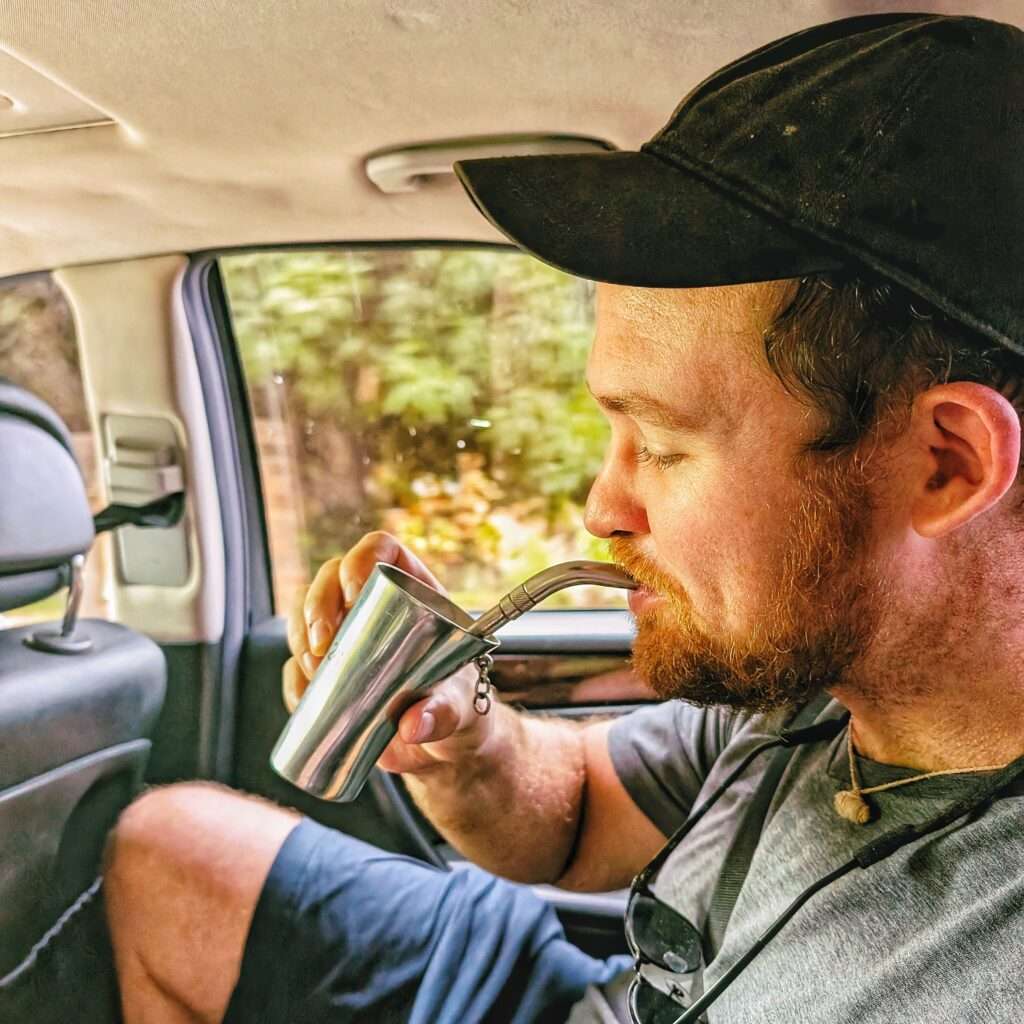
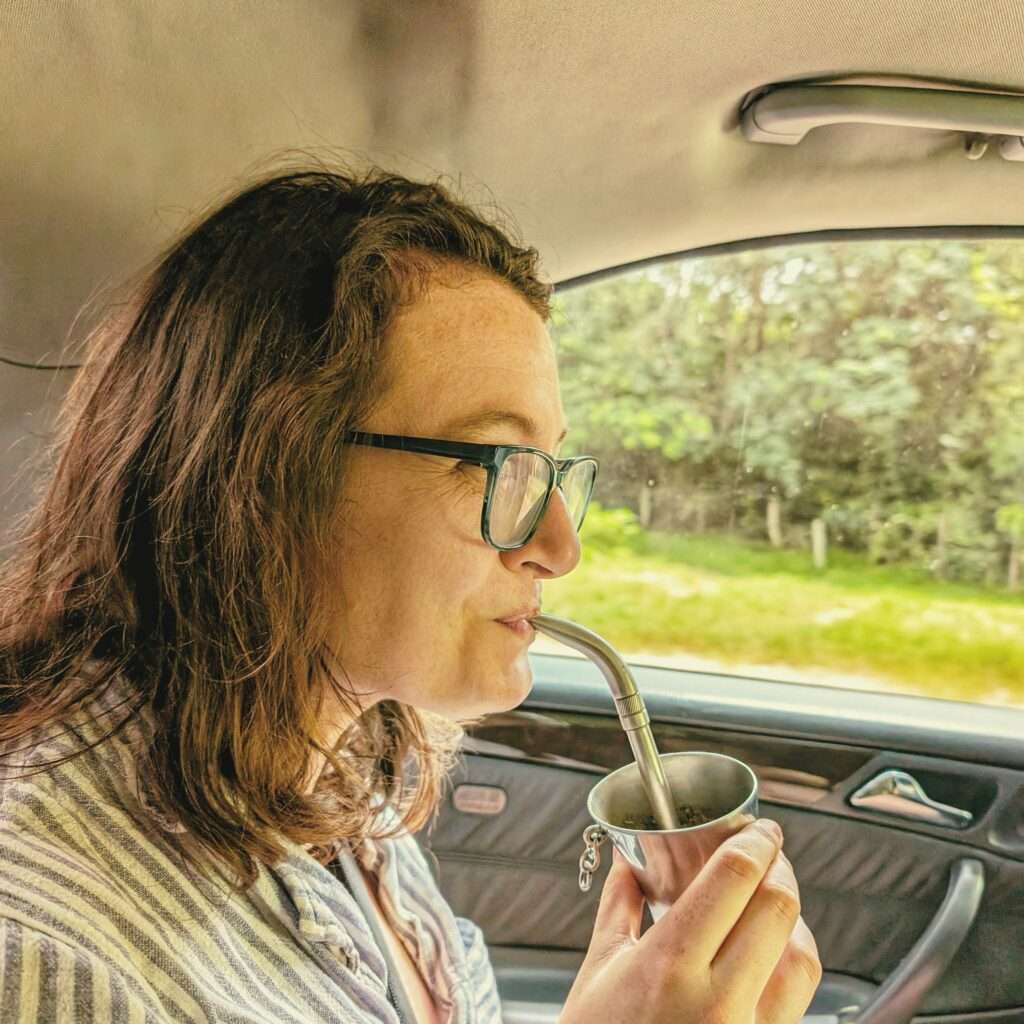
Maté originates from the Guaraní people, the native populations that lived in the area. The traditions of the drink spread when the Europeans colonized the area.
The drink is often shared among friends and family where one person provides the cup, straw, yerba, and water. After they pour hot water over the leaves, they pass the cup to a person in the group. That person drinks the entire cup until they hear a bubbling noise through the straw and returns it to the initial person, who then fills it up and hands it to the next person. This continues on throughout a social gathering.
There are a few rules when it comes to the maté experience that you need to follow.
- Don’t move the bombilla within the cup. The initial person placed the bombilla in a specific spot and moving it may clog the bombilla.
- Always finish the water in the cup. Try to make a bubbling sound with the straw at the end to indicate that you finished the whole cup.
- If you no longer want any maté (which is completely ok!), simply tell the person pouring the water “gracias” when returning the cup.
Now What is Tereré?
Tereré is a version of maté that is typically drunk in Paraguay with a couple of different qualities. Here, it is served iced, which is necessary given the heat of the region (it was 95° F, 35° C, the whole week we were here and people said that it was nothing). People also add herbs to the ice water prior to pouring it. These herbs may have medicinal properties. You have the opportunity to try tereré during the tour of the Circuito de Oro.
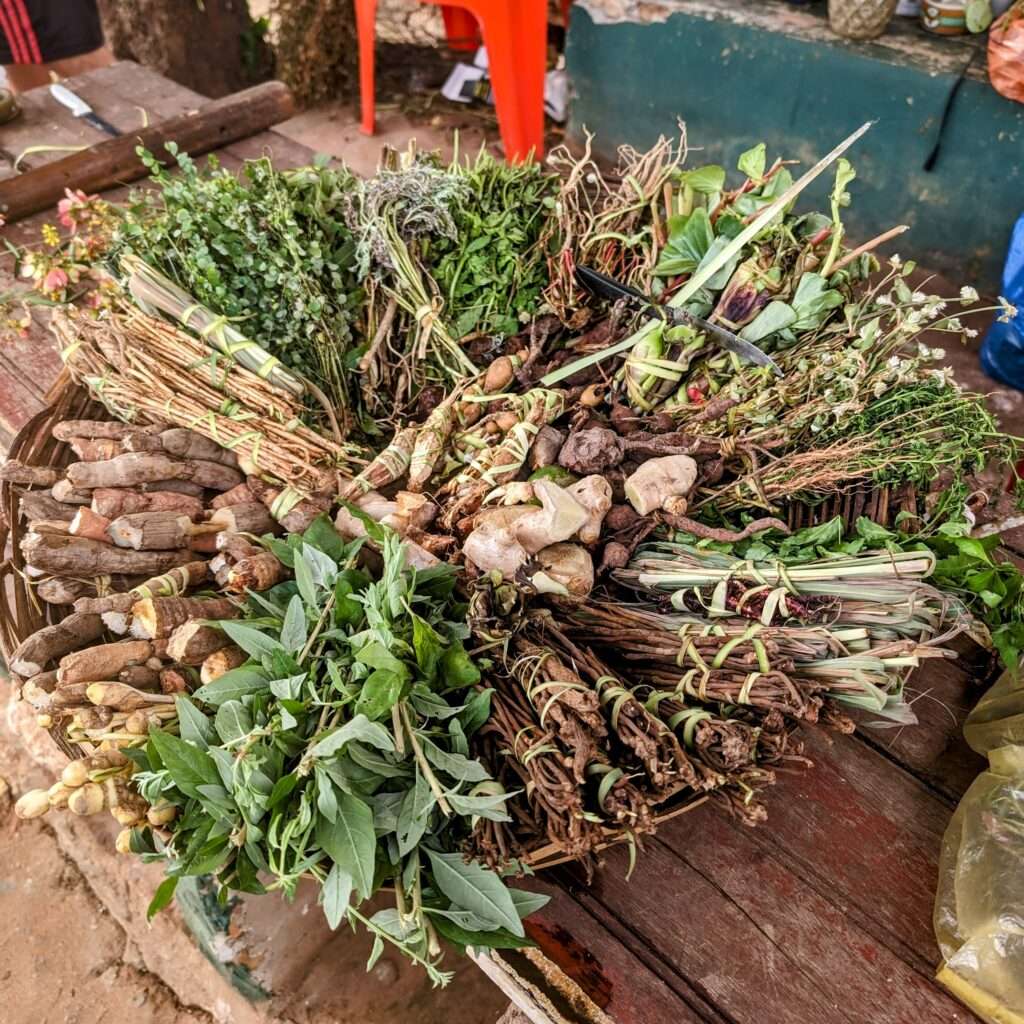
You can go to a vendor that grows these herbs, tell them your ailments, and they will mix you the perfect cocktail of herbs to add to your water. Most people get up to three herbs to add to their drink. These herb vendors can be found on the side of most major roads within Asuncion, Paraguay.
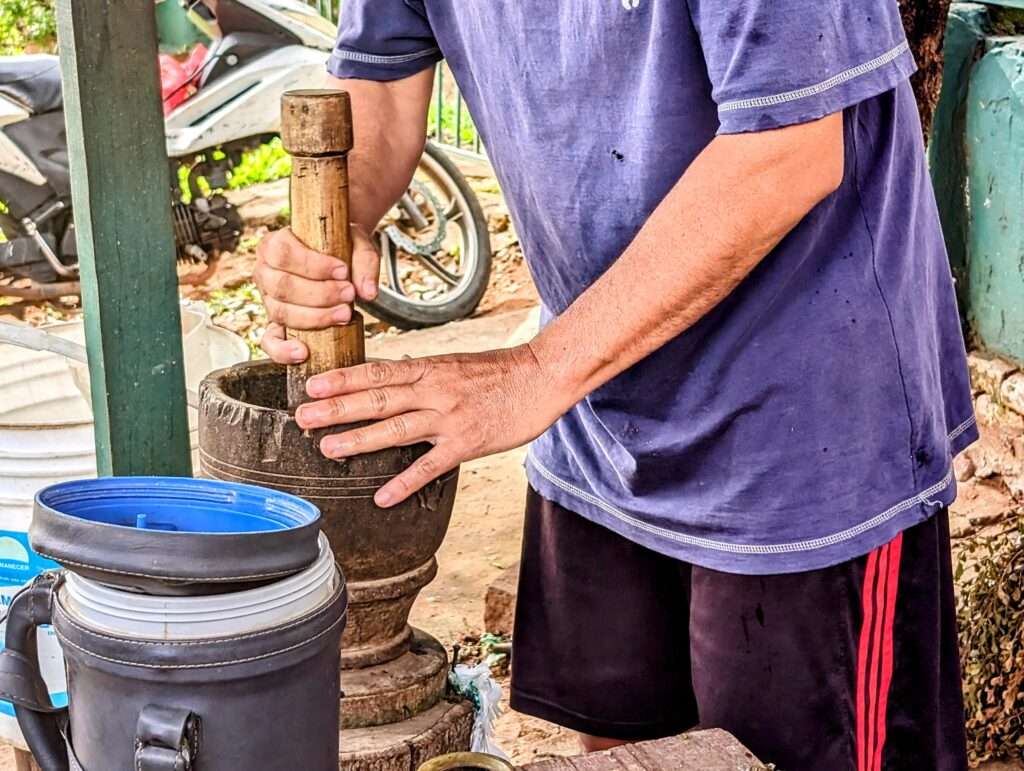
The same social aspect and etiquette expectations apply to tereré as maté.
Significant Religious Sites, Pilgrimages, and Other Religions in Paraguay
The Circuito de Oro goes to several culturally and religiously important sites, including some buildings and towns from the colonial era of Paraguay. In addition, the tour includes two significant churches to the region that talk about the history of the area and the religious culture of Paraguay and today.
Caacupé Cathedral and a Religious Pilgrimage
The Caacupé Cathedral, located 36 miles from Asuncion, Paraguay has a great religious significance to the people of Paraguay. It is a basilica dedicated to the Virgin Mary and a strong pilgrimage destination.
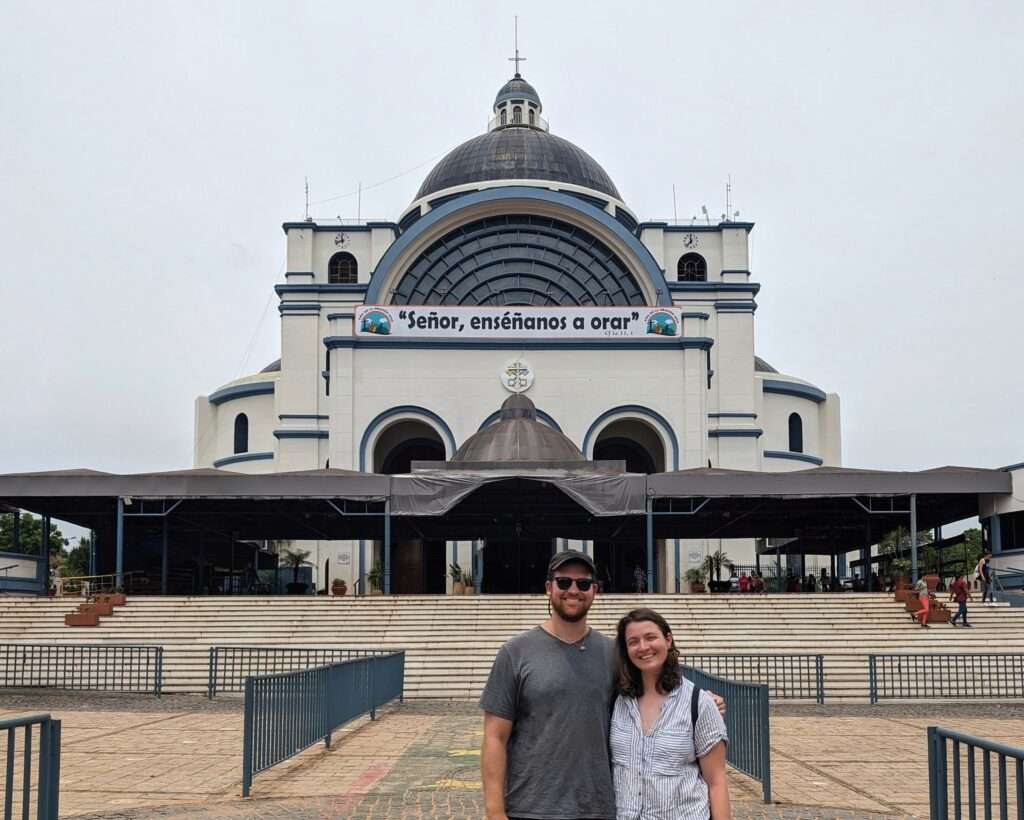
Every December 8th, the feast day of Mary and Paraguay’s most important religious holiday, is a day when many people walk from Asuncion or their hometowns to the church. People make dedications to the Virgin Mary about their health or hardships; if she heals them, they promise to do the pilgrimage the following year. Because of the heat in December in Paraguay, the walk typically happens in the early morning or late evening. The pilgrimage ends in a celebration at the basilica, which includes fireworks, food vendors, and souvenir shops.
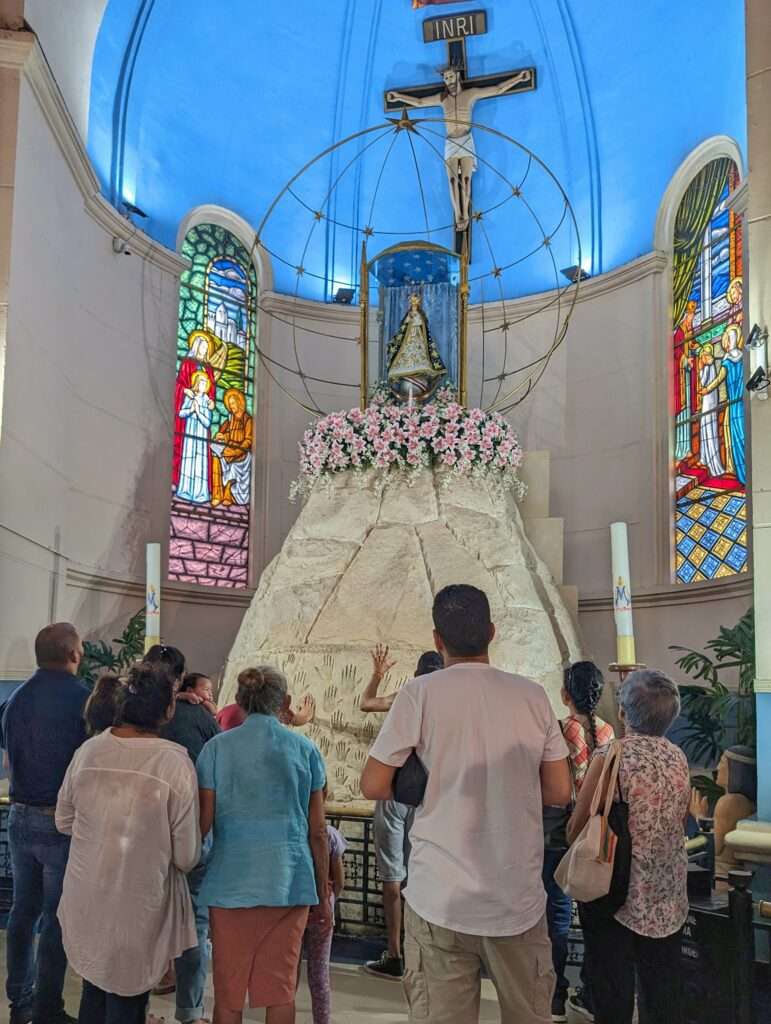
While December 8 is the official day for the pilgrimage, people do the walk throughout the year. When you visit the church, you will see people walking up the hill, doing their own pilgrimage to the Basilica.
Templo de San Buenaventura - Yaguarón
Another beautiful church in the area that you will visit during the Circuito de Oro is the Templo de San Buenaventura, submitted to be added to the UNESCO World Heritage list. It was built by the Franciscans in the late 1500s with the help of the local indigenous people in the colonial style of the time. There are a few other buildings from the period around the church that help visualize how the town would have looked back then.
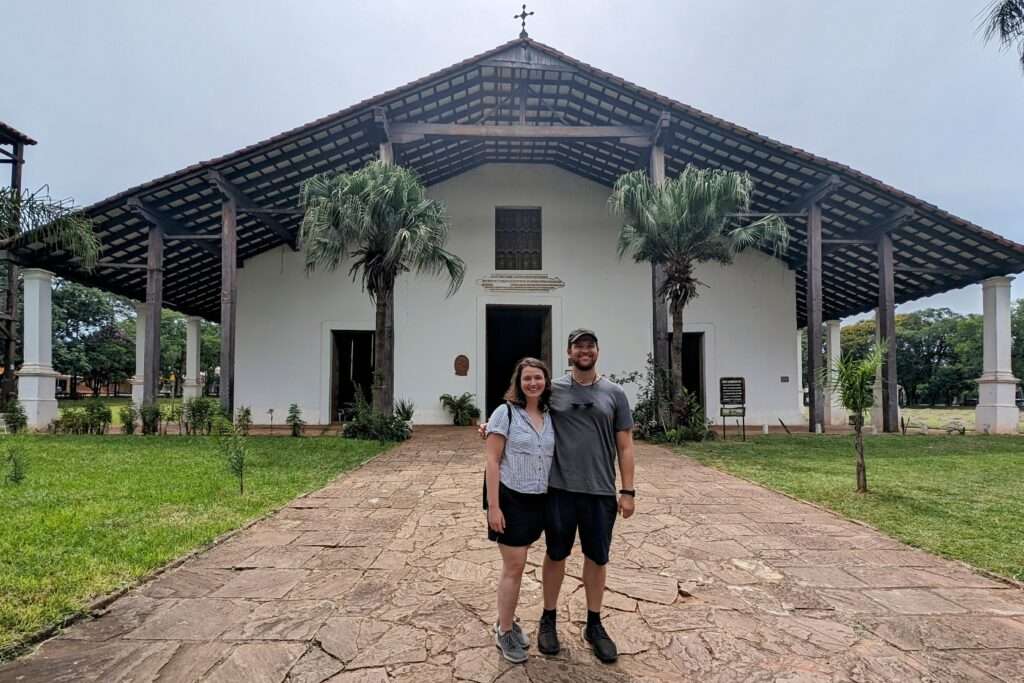
The interior of the church is ornately decorated through the paintings in the beams and the beautiful altarpiece that has carvings of the story of the Bible to explain Christianity to the indigenous Guaraní people.
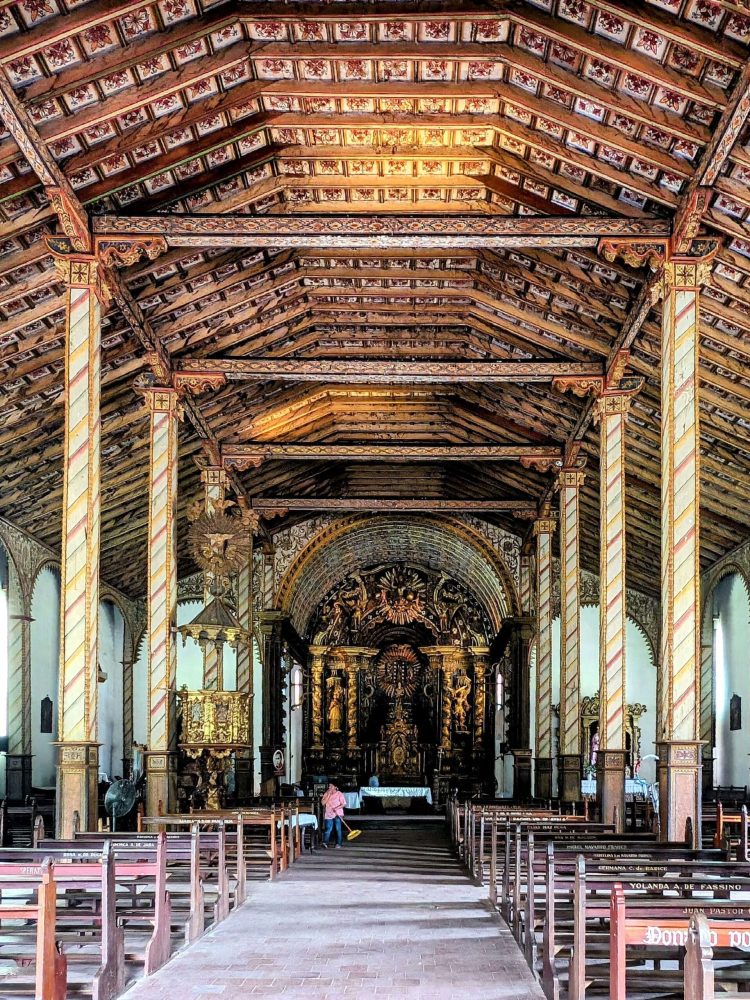
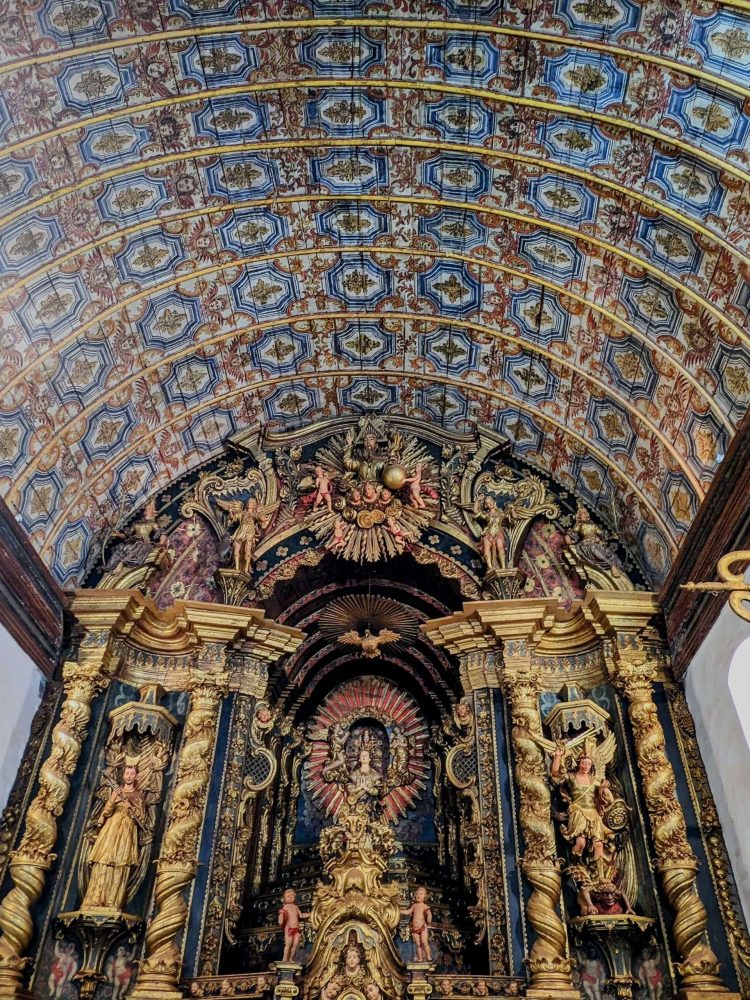
Above the altar is a painted ceiling. It is claimed that the artist painted the indigenous workers into this part of the ceiling to thank them for the construction help.
Mennonites in Paraguay and Others
There are more than 30,000 Mennonites in Paraguay, many of whom are German immigrants. They live in communities close to the Chaco (the harsh desert region that makes up half of Paraguay). These communities continued to speak German and settled on their own, not integrating with other Paraguayan populations.
In addition to the Mennonites, Paraguay became a haven for Nazis at the end of World War II, hiding notable Nazis such as Eduardo Roschnann and Josef Mengele. The Paraguayan dictatorship of the time refused to hand over Nazis to Germany for trials and helped them hide in South America. After the overthrow of the dictator, Germany resumed diplomatic relations with Paraguay.
It is not uncommon to see people of German heritage (stereotypically blonde haired and blue eyed) in Paraguay.
Artwork and Craft of Paraguay
If you’re interested in local arts and craft production, you will have the chance to see the skill of the artisans of Paraguay, both during the Circuito de Oro and within Asuncion.
Ñanduti
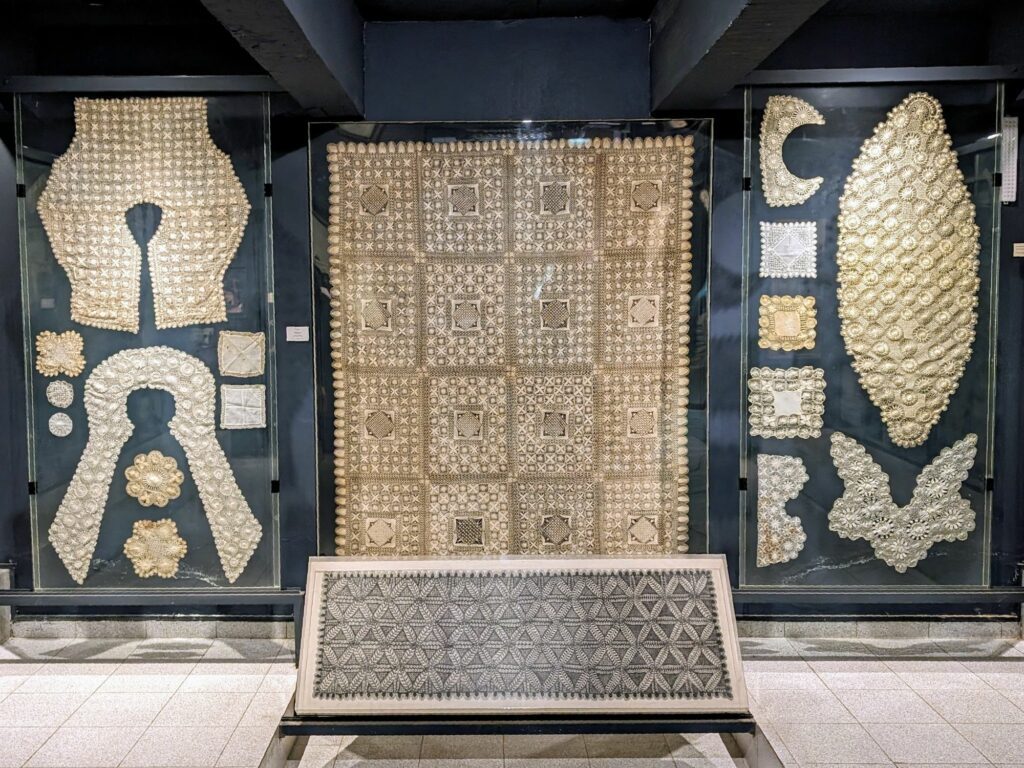
Ñanduti is traditional Paraguayan lace, typically made by Guaraní artisans. It can be white but is often incredibly colorful as well. The lace can be used for decoration, tablecloths, collars, etc. It can take multiple days to make any piece of artwork. Most of the embroidery is done by women, empowering them because it has been a valuable skill passed down through generations.
Pottery
The clay in the Asuncion, Paraguay region is incredibly rich, making it excellent for pottery. Most of the pottery created in the region is functional, such as large pots for plants. Paraguay is also a large producer of clay shingles for roofs.
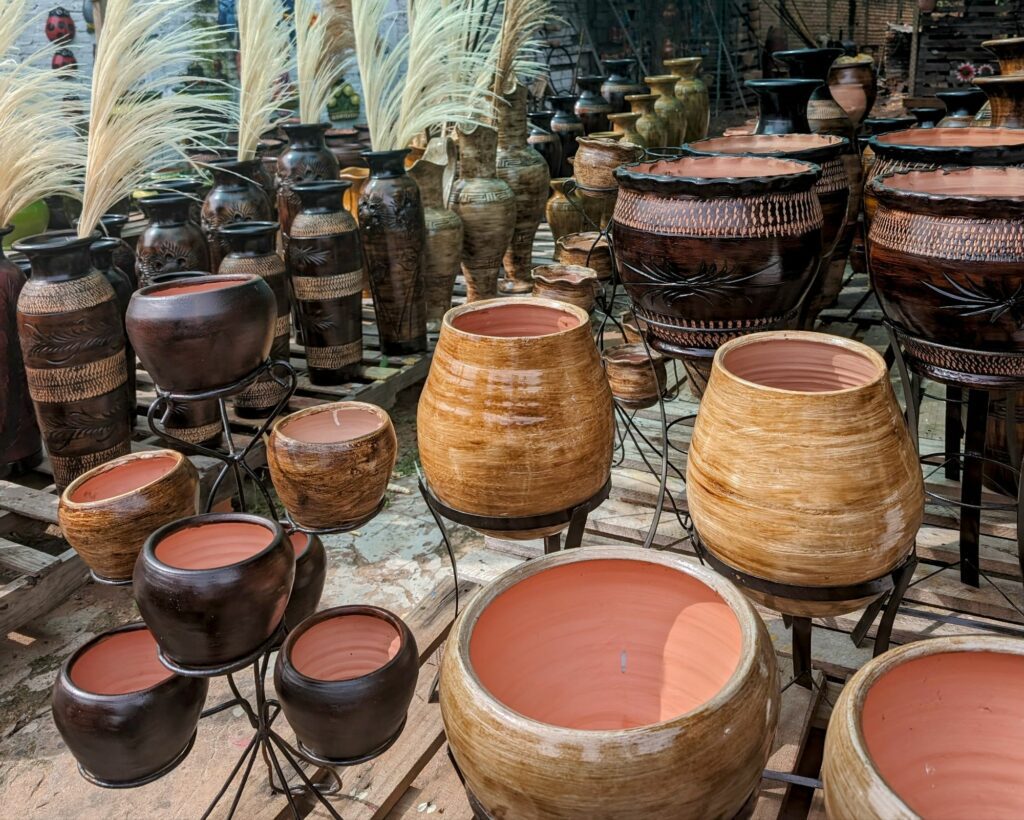
To learn more about what you can do in Asuncion, Paraguay, read this article with a recommended itinerary for visiting this part of the country.

